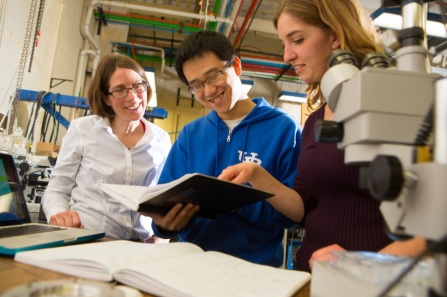
- Details
- Tuesday, 21 February 2017

Molecules vibrate and resonate. These vibrations enable life to function, they are believed to play a role in photosynthesis in plants and protein folding in general. BioXFEL participant and University at Buffalo physicist Andrea Markelz has recently been awarded $1.35 million in grants, from the Department of Energy and National Science Foundation, to research the nature these vibrations in protein, and to develop instrumentation that aids other researchers doing the same.
NSF funding will support Dr. Markelz's "Pinpointing the movements of Important Proteins" project. In this project, Dr. Markelz and collaborators from Hauptman-Woodward Medical Institute, University of Wisconson-Milwaukee, among others will identify the motions of proteins that carry out vital biological functions. The team will look at photoactive yellow protein (PYP), which is thought to influence how photosynthesizing bacteria called cyanobacteria respond to light, and dihydrofolate reductase, which helps to regulate the levels of chemicals involved in cell growth and proliferation in various organisms.
The project will examine how the motions of these molecules impact their function within organisms, providing information on how proteins can change their shape so efficiently — a crucial step toward developing pharmaceuticals that inhibit or take advantage of protein vibrations to treat disease. This project was initially funded by UB seed funding for the BioXFEL center.
